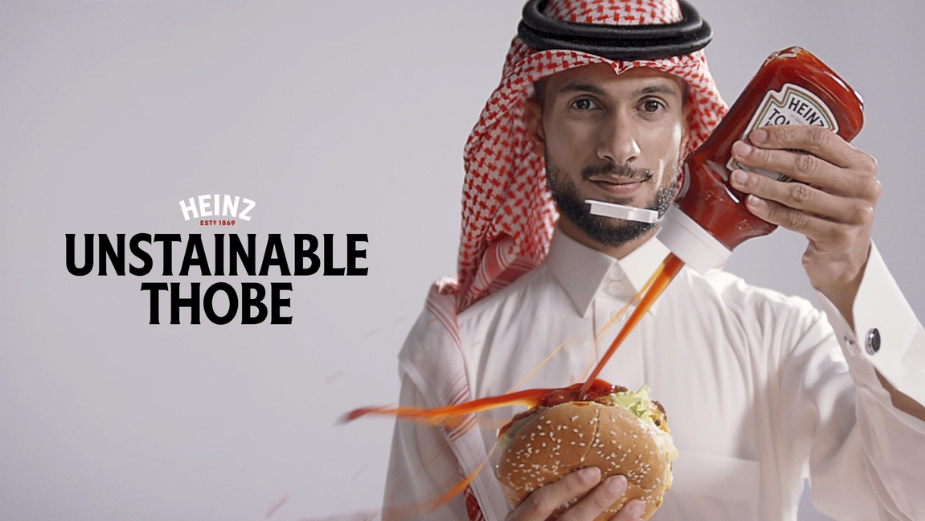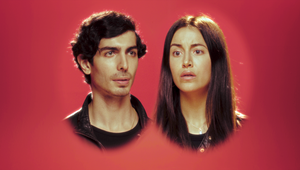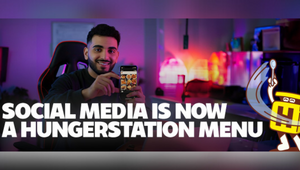
Problem Solved: The Unstaniable Thobe

The iconic white garments worn by Middle Eastern men, otherwise known as thobes, are a clothing staple within the region. Worn in the hot climates of Saudi Arabia, Dubai and many other countries across the Middle East, it’s a symbol of national pride and a way to keep cool during the summer months of scorching heat.
Alongside the cultural significance, there is the matter of keeping the garment pristine, signifying a commitment to the culture. That’s all well and good, but not when you want to indulge in eating and use Heinz ketchup alongside your food. With Heinz having a global reputation, there was a lack of context running across the Saudi Arabian market, so in came Wunderman Thompson Dubai to work with the brand and create ‘The Unstaniable Thobe’.
Using nanotechnology within the garments, working with local craftsmen and establishing strong roots for the brand in the region, Wunderman Thompson Dubai’s executive creative director Pablo ‘Daf’ Dachefsky explains how the campaign came to fruition as well as the technical side of creating the garment.
WHAT YOU MADE
We created the Unstainable Thobe, a traditional Saudi Arabian garment enhanced with nanotechnology to become stain and smudge-proof, empowering Saudi men to eat fearlessly.
The result? A perfect union of tradition and innovation, helping solve a real-life problem directly related to the consumption of Heinz.
THE PROBLEM
The client approached us with a problem: Heinz has struggled to create a strong connection with customers in Saudi Arabia, despite being a market leader and having a decades-long presence in the region.
So, we did a little digging of our own and found that Heinz was perceived as a global brand. On the one hand, that acted as a testament to the quality of the product, but on the other, it posed an obstacle to establishing a relationship with an audience that values local context and culture.
We needed to show them we had established strong roots in the region and were part of their world.

IDEATION
We started looking for insights into food in Saudi Arabia and the Arabian Gulf region, particularly when it came to ketchup consumption.
As it turned out, we found our window of inspiration came, not from food, but from their culture. Throughout our research, images of Gulf men eating while wearing full-length, pristine white thobes kept appearing. And no ketchup was to be seen in those pictures.
While Heinz’s message worldwide was that we should all be proud of our stains, that was not the case in Saudi Arabia. Here, a stain on our thobe is a stain on our pride.
We realised we had the chance to make Heinz part of authentic Saudi moments, where food plays a significant role.
The idea came quickly: can we make the national garment, the white thobe, ketchup-friendly?
What took a lot of time was the how.
We had to research several technologies and solutions and test them out. We discussed everything from redesigning the thobe to changing materials and fabric.
It became clear that nanometric coating was the most promising solution because it allowed us to keep the iconic design and qualities of the thobe, while giving it a whole new functionality.

PROTOTYPE & DESIGN
From the start, we partnered with local tailors, including them in the research stages to understand what makes the thobe so relevant for the Saudi and Gulf culture. We investigated traditional laundry shops (usually the only place Saudi men trust to have their thobes washed) to learn in detail about the entire cleaning process.
We quickly learned that we had to keep some aspects of it untouched: the design, the material, and the variations in style per country – for example, the thobe in Saudi Arabia varies slightly from the ones in the UAE and Oman. As a brand that aimed to become locally relevant, that was crucial.
We realised that changing such a traditional symbol of culture could be a huge risk for the brand. Many people recommended not moving forward with that idea, because messing with a Saudi thobe is the equivalent of messing with their national pride. But we firmly believe in the ‘Go Bold or Go Home’ mantra. If we wanted to spark a new behaviour, we needed to start a new conversation.
Like any innovative project, finding the right collaborators was crucial to bringing it to fruition. An entire team of agency folk, clients, tailors, tech people, and textile experts joined forces to ensure we’d find the best solution. We spent almost a year trying to figure out the best way to solve the problem, and we knew it would be a challenging task from the start.
First, we tried the easy way; we investigated what already existed in the market, like water-repellent sprays that we can apply to outdoor furniture to protect it from sun and rain. But that didn’t work—it made the fabric thicker, the product was removed when washed, and it needed to be reapplied every three months. Then, we looked for ceramic coatings, like the ones we can apply on car seats, and that was another disappointment for the same reasons.
We learned from our mistakes and eventually found the ideal solution: nanotechnology. We searched around the world for the right nanotechnology solution. Once that was locked in, we went through a lengthy study process – learning how to make the coating part of the thobe without compromising the way it feels, its temperature balance, and its durability.
During months and months of trial and error, and endless testing, there were many moments we thought we wouldn’t be able to achieve our aims. It was an emotional roller-coaster at times. But eventually, we solved the question: the nano-coating had to be applied to the yarn of the thread, even before it became an actual fabric.
That was the only way to ensure that the thobe could maintain its material qualities, protect from the region’s extreme heat, and be tailored in the traditional ways.
But most importantly, it allowed the thobe to be washed hundreds of times while keeping the protective barrier that kept the stains away, making it a durable, sustainable piece of clothing.
LIVE
It became very clear that there are no shortcuts when it comes to bringing an innovative product to our customers. Creating work that matters takes time, patience, sweat, and even tears.
Heinz saw a significant increase in positive sentiment towards the brand. People were talking about it and proud of how a global brand added a unique touch to a national icon. Local newspapers approached us asking about the Unstainable Thobe, taking the message to new audiences.
It even helped Heinz in other markets, resonating especially well in countries with large Muslim populations.















